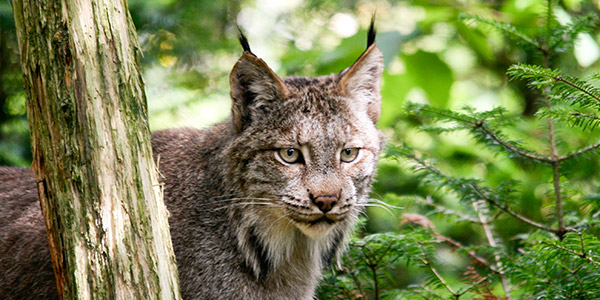Rainforest And Other Ecosystems

Wildlife flourishes in areas with rich and varied ecosystems. Rainforest, such as the Amazon, are biodiversity hotpots, teeming with an incredible array of species. The dense canopy provides habitats for countless birds, mammals, insects, and amphibians. From the vibrant plumage of toucans to the elusive movements of jaguars, rainforest showcase the interconnections of life in its most exuberant form. Similarly, savannas, with their mix of grasslands and scattered trees, host iconic African wildlife like lions, elephants, and giraffes. Coral reefs in the ocean, with their vibrant marine life, exemplify the biodiversity present in these underwater ecosystems.
National Parks and Reserves

Protected areas, such as national parks and wildlife reserves, play a crucial role in preserving natural habitats and fostering thriving wildlife populations. Yellowstone National Park, located in the United States, is renowned for its geothermal features and diverse fauna, including grizzly bears and wolves. In Africa, the Serengeti National Park in Tanzania supports the annual migration of wildebeest and zebras, showcasing the dynamic interactions between predators and prey.
Water Bodies and Wetlands

Wetlands, lakes, rivers, and coastal areas are vital ecosystems supporting a plethora of life. The Okavango Delta in Botswana, one of the world's largest inland deltas, is a prime example. This unique wetland sustains a diverse range of species, from hippos and crocodiles to a rich assortment of birdlife. Coastal regions, like the Great Barrier Reef in Australia, harbor intricate marine ecosystems, housing an astonishing variety of fish, coral, and other marine organisms.
Mountains and Alpine Regions

High-altitude regions, including mountain ranges and alpine meadows, offer a habitat for wildlife adapted to challenging conditions. The Himalayas, Earth's highest mountain range, are home to elusive snow leopards, Himalayan tahr, and red pandas. The Rocky Mountains in North America feature diverse fauna such as elk, bighorn sheep, and golden eagles, illustrating the adaptability of life at high elevations.
Deserts and Arid Regions

Contrary to common perceptions, deserts are vibrant ecosystems with unique adaptations. The Sonoran Desert, spanning parts of the United States and Mexico, showcases an array of desert-adapted species. From the iconic saguaro cacti to the resilient Gila monsters, desert ecosystems exemplify nature's ability to thrive in arid conditions.
Islands and Archipelagos

Islands, especially those isolated from the mainland, often host species found nowhere else on Earth. The Galápagos Islands, a volcanic archipelago in the Pacific Ocean, are famous for their role in shaping Charles Darwin's theory of evolution. Each island has its own distinct fauna, showcasing the evolutionary processes that occur in isolation.
Migration Routes

Many species embark on incredible journeys, following specific migration routes. The Serengeti's great wildebeest migration is a remarkable spectacle, involving thousands of herbivores traversing vast distances in search of fresh grazing lands. This annual migration not only sustains the herbivores but also attracts predators, creating a dynamic and interconnected ecosystem.
Transitional Zones and Ecotones

Ecotones, where different ecosystems meet, are rich in biodiversity. Transitional zones, such as the boundary between a forest and a grassland, provide diverse habitats that support a wide range of species. Exploring these areas offers insights into the interactions between different ecosystems and the adaptability of wildlife to changing environmental conditions.




Leave a comment
This site is protected by hCaptcha and the hCaptcha Privacy Policy and Terms of Service apply.